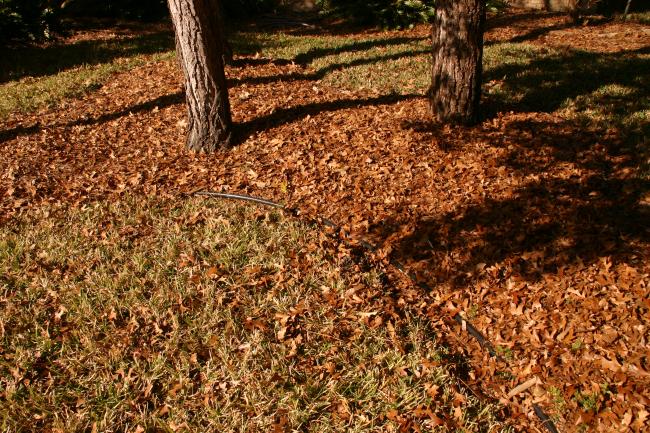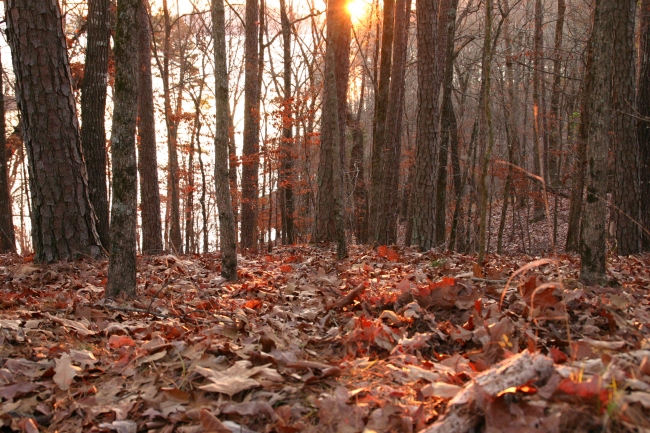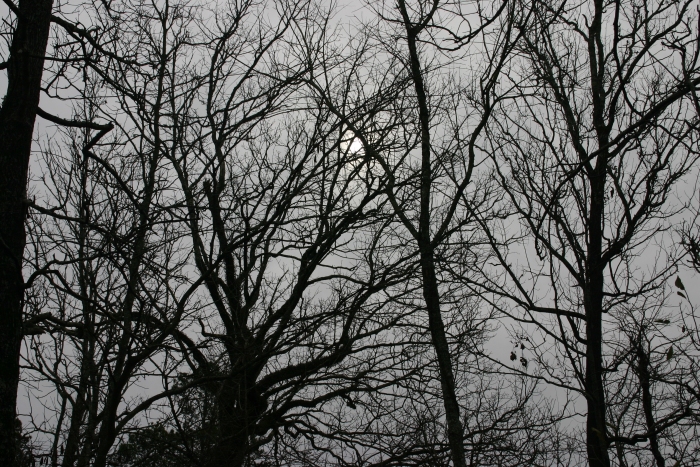(I wrote this back when I lived in Texas and had lots of leafy trees. Now I live on the Oregon coast, where the shrieking Pacific winds are capable of vaporizing leaves!)
This afternoon I took the yard blower out to the front yard to "redistribute" the fallen leaves. The easiest and fastest (and typical) thing to do is blow 'em all into a pile and then rake 'em into bags, to be deposited in the street for pick-up.
But that seems such a shame: bag up and discard all that organic material only to go out next spring and buy bags of mulch to replace it. Besides, Ms Nature wouldn't approve. She induced all those trees to give up this season's leaves to nourish the Earth, the same sort of thing that goes on each season in the woods behind our house.
So I blow the leaves off the driveway and sidewalk onto the yard and then attach the vacuum attachment and then proceed to hobble around the yard, sucking up leaves (and an occasional pine cone) and then blowing them from one side of the yard to the other, leaf bits flying all over the place until they cover the grass, the holly ferns in front of the house, and the lower parts of my hollywood junipers. Then I go to the other side of the yard and blow the leaves right back where they were, though smaller.
It takes several passes, going from one side of the yard to the other until most of the leaves are broken up into what might pass for mulch, and there is a relatively distinct covering on the tree beds and the holly fern beds.
There are many intact leaves still left on the yard itself - this is not the type of operation that leads to nice orderly bare grass. But it does lead to more nourished grass. I suppose that the next few windy days will result in some of the excess leaves being deposited in the neighbors' yards. An unfortunate event I tell myself, but hey, every good campaign has its collateral damage.
All of this is in contrast to the typical commercial landscape company, which assiduously removes every atom of organic nourishment from around trees, shrubs, and the grass itself (and then comes around about twice a year and deposits 20-0-0 nitrogen fertilizer on the grass because for some reason it doesn't look green).
After I am "finished" The leaves you see here will decompose over the winter and provide nourishment. I suppose you could call this the "natural" look. "Formal" it ain't. |
 |
Here's what Ms Nature intended |
 |
Some deeper thoughts about this leaf business.
There are not four seasons. There are just two. The season of Earth is Spring and
Summer, and Earth is most alive during this time, with its bright green exuberance and constant chattering
of insects and birds. Earth ends its season with a flourish - the hot, bright August and the raucous insect symphony
at its loudest.
Air's season is the Fall and Winter, when the air is active, blowing colder and colder
over the land until - as if in apology - it envelops the land in a soft white blanket to keep it warm. The Air makes
its exit with a similar flourish - the powerful pre-spring winds.
Air, during its season, coaxes the leaves from the trees and gently gives them to Earth, later to become
its food. During the season of Earth, the leaves on the trees give the air the gases it needs. So the Tree, then,
is the mediator between Earth and Air.
And in the Winter you can see the trees for what they are - blood vessels to the air.
We are of Earth and Air. The part of us that is of Air thinks, dreams, and occasionally soars.
But the part of us that is of the Earth understands...
In the winter you can see the trees for what they are: Blood vessels to the air |
 |
Copyright © 2020 J.A.